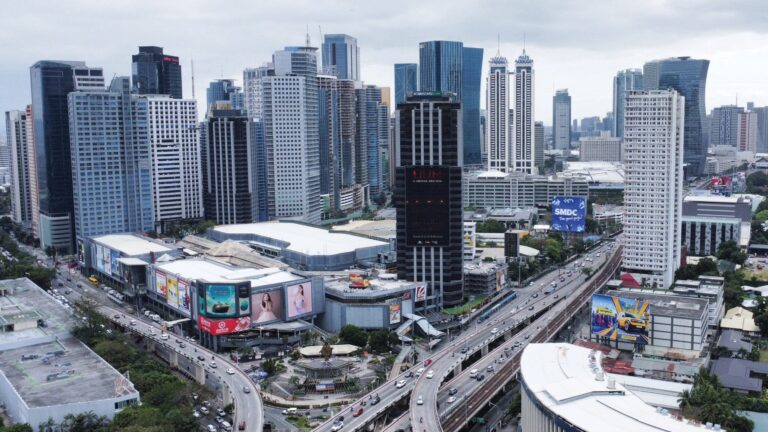As an exponent of Philippine progress, the Manila Bulletin has been chronicling advances in the built environment of the Filipinos for 125 years. Here’s to infrastructure milestones for a resilient and connected futureAmid the complexities of modern development, the Department of Public Works and Highways (DPWH) has taken the lead in reshaping the Philippine landscape, …
As an exponent of Philippine progress, the Manila Bulletin has been chronicling advances in the built environment of the Filipinos for 125 years. Here’s to infrastructure milestones for a resilient and connected future
Amid the complexities of modern development, the Department of Public Works and Highways (DPWH) has taken the lead in reshaping the Philippine landscape, steering the nation toward a future that is both sustainable and resilient.
Under the leadership of President Ferdinand “Bongbong” Marcos Jr., DPWH has been at the forefront of advancing long-term infrastructure goals aligned with the vision of a prosperous, disaster-resilient, and connected Philippines.
Guided by the Build Better More program, the department has championed transformative projects that drive national development, enhance safety, and foster economic growth, positioning the country to meet the challenges of the 21st century head-on.
Roads, bridges, and economic growth
Infrastructure’s true potential lies in its ability to stimulate economic growth.
Roads have long been the backbone of the Philippines’ development and in 2023, DPWH made significant strides in improving connectivity.
From July 2022 to May 2023, the department completed 11,945 kilometers of roadworks, including bypasses, diversion roads, and missing links, effectively reducing travel times and easing congestion across the nation.
In collaboration with the Department of Tourism (DOT), DPWH has enhanced access to key tourist destinations through the Tourism Road Infrastructure Program (TRIP), further establishing the Philippines as a premier global travel hub.
The Roads Leveraging Linkages of Industry and Trade (ROLL-IT) program has bolstered trade infrastructure, facilitating smoother business operations and improving regional connectivity.
Farm-to-market roads, with a total of 216 kilometers completed, have supported agricultural productivity while 1,263 bridges have improved the flow of goods and ensured safer travel.
Notable infrastructure projects, such as the ₱714 million Cansan-Bagutari Bridge in Isabela and the ₱530.94 million San Pedro Bridge in Iloilo, have dramatically improved regional connectivity.
Ongoing expansions, like the Lumintao Bridge in Occidental Mindoro and the Jibao-an Flyover in Iloilo City, continue to fuel local economic growth and enhance accessibility.
Resilient flood management
Given the Philippines’ vulnerability to typhoons and floods, DPWH has prioritized flood management to safeguard communities.
By May 2023, the department had completed 2,103 flood control projects, significantly mitigating the devastating effects of climate change and natural disasters.
Beyond flood control, DPWH has reinforced disaster preparedness with the construction of evacuation centers, rainwater collectors, and educational facilities.
Over 4,000 classrooms have been built, ensuring support for the educational system while 55 evacuation centers provide safe havens during calamities.
Rainwater collectors further bolster the country’s water supply, particularly during crises, promoting sustainable living even in the face of natural disasters.
Sustainable infrastructure for future growth
As the department looks to the future, it remains committed to sustainable infrastructure development.
Major projects like the Samar Pacific Coastal Road, the Cagayan de Oro River Flood Risk Improvement Project, and the Pampanga Bay Integrated Disaster Risk Reduction and Climate Change Adaptation Measures address immediate challenges while laying the groundwork for a resilient, future-ready Philippines.
Inter-island connectivity continues to be a priority, with projects like the Panguil Bay Bridge in Lanao del Norte and the Guicam Bridge in Zamboanga Sibugay serving as critical links between the country’s islands.
These initiatives promote regional economic development, national unity, and equal opportunities for growth across the archipelago.
Building a path to future prosperity
As DPWH continues to drive the nation’s infrastructure development, the Philippines moves closer to a more interconnected, resilient, and sustainable future.
With an unwavering commitment to enhancing roadways, bridges, flood control systems, and community infrastructure, DPWH is laying the foundation for a more secure and prosperous future for every Filipino.
In the years ahead, the department’s initiatives will remain instrumental in driving economic growth, fostering social equity, and enhancing disaster resilience.
Infrastructure will remain the cornerstone of the nation’s progress, ensuring a thriving and secure Philippines for generations to come.






